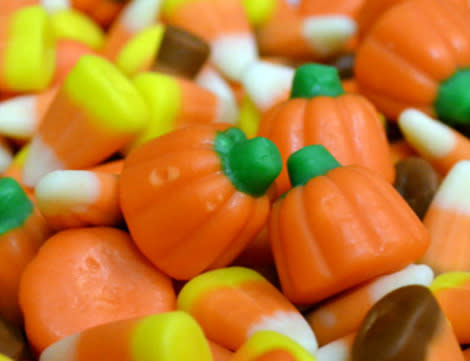How to Keep Halloween Candy Eating Under Control

by Jenni Grover, MS RD LDN, Mother Nature Network
A year ago, I moved with my family from the country to the city. Our old house was in the middle of the woods with a mile-long driveway. And that meant that we never had trick-or-treaters. This year, that will certainly not be the case. Our neighborhood can get up to 1,200 kids per house on Halloween.
We are certainly going to be out trick-or-treating ourselves. And I can only imagine the kind of stash my kids will get this year. As an advocate for organic whole foods, I have to say I'm a little nervous. But I am also aware that banning candy is a road to nowhere. So what's a registered dietitian to do?
Is it possible to keep this candy consumption to a minimum? I think it is. But you need to have a plan.
Below are some options for a more controlled, healthy approach to Halloween candy. You can pick and choose from a few of these to create your own strategies that work for you and your family.
1. Don't ban the candy outright. After working hard ringing all of those doorbells and looking cute, kids do deserve to enjoy some of their treats. The last thing you want is for kids to start thinking of candy as "forbidden food." Emotional attachments to food based on real or perceived scarcity can have a lasting influence on a child's eating habits, causing overconsumption when they do have access later in life. Kids are actually quite adept at self-regulating their hunger. As hard as it may be, I recommend allowing them to eat as much candy as they want for the first day or two. When given this freedom, you will be amazed how little they eat in the end.
Also see: The science behind your favorite candy
2. Keep candy out of sight. While I recommend allowing kids to enjoy their treats, there is still no need to display Halloween candy in a dish on the dining room table. Try keeping fruits and veggies in sight instead, and then put the candy somewhere where they have to dig for it.
3. Edit the stash. Older kids enjoy controlling and sorting through their candy, so let your kids pick out a few choice pieces of candy and then throw the rest away. This will empower them to make better food choices in the long run. I do recommend warning kids that you plan on doing this before you go out trick-or-treating so they are prepared for some difficult choices when they return home.
4. Eat dinner before trick-or-treating. It's no secret that if you're belly is full, you eat less. So make a healthy dinner for your kids before going out. (If nothing else, you'll feel less guilty as you watch them wolfing down candy corn.)
Also see: 12 healthy homemade candy recipes
5. Coordinate with neighbors. Every year in our neighborhood, some houses announce that they will be open for toddler trick-or-treating, which goes on a little earlier and often includes some healthier treat options like temporary tattoos, little toys or fruit-based snacks. Even if toddler trick-or-treat doesn't happen in your hood, you can use neighborhood listservs or personal connections to suggest healthier treat alternatives and - if you are particularly concerned - you can only plan on visiting with folks who are on board with the idea.
6. Donate candy to deployed soldiers. Operation Shoe Box delivers support, snacks and much needed personal care items to deployed troops. The idea is both to provide items that makes troops lives a little easier and to also send out a message that people back home are thinking of them. Around Halloween, Operation Shoe Box sends out a call for unwanted candy. Donating to this cause will not only support someone as they are stationed abroad, but it will also teach your kids about the value of sharing.
Related stories:
